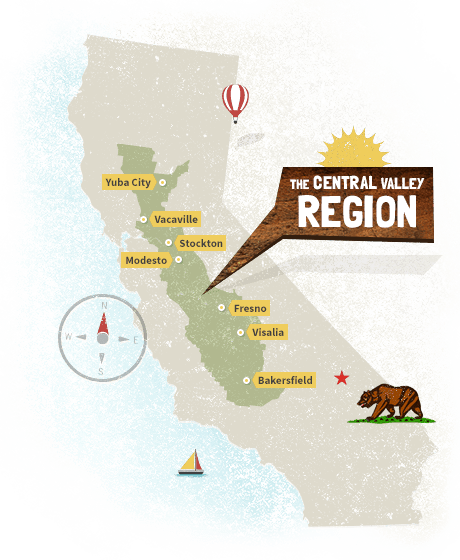
“This guy wasn’t responding to eviction notices, so they sent 2 deputies and a locksmith to his house to evict him. What they didn’t know was that the guy was waiting on the other side of the door with a loaded AK-47. As soon as they started drilling, he opened fire and killed one of the deputies and the locksmith. It turned out to be a long, drawn-out standoff.”
Carlos Rodriguez tells the story of how he began his adventure into the world of mobile journalism. Having grown up in Modesto, California, Rodriguez noticed the lack of reliable local news in the Central Valley. Due to the distance, the nearest local news stations were hours away, and when a newsworthy incident would break out, he would always be first to the scene. This had him thinking.
“I was the first one there and it was hours before the big stations showed up. I’m standing there thinking, ‘this information needs to get out quickly so people can stay safe.’ So then I started doing some research and found out about live streaming.”

Carlos’ work in live streaming comes from very humble beginnings. Starting as a news reporter for Central Valley TV in 2005, he worked at the station for awhile before inheriting the small news company in 2009 when the owners became ill. Having worked in broadcast journalism his whole career, Rodriguez knew that cable news wasn’t a smart direction for his company, especially for the Central Valley. Because of this, he started experimenting with live streaming.
“I saw what social media could do in terms of sharing information, and I wanted to see if there was a way where we could do news a little more immediate.”
He started initially by hauling his entire desktop computer with him in the back of his car, a feat that deserves some acknowledgement. Along with a tethered video camera and a Verizon Aircard, he was able to stream a super low-quality stream onto the Internet. This was during the infancy of live streaming functionalities on the Internet, and he would continue these ventures for the next few years, eventually buying Teradek’s Cube encoder to stream directly without the need for his computer.

However, it wasn’t until Facebook adopted its live streaming capabilities that Rodriguez’s work really began to prosper. Having the ability to stream on a platform where virtually everyone is already a member of helped boost his news credibility tremendously.
“Facebook Live has taken what I traditionally knew as a medium and digitized it into a format that is instantly consumable by viewers. It instantly changed the way I produce news, and in turn it also changed the way viewers consume it. It is live, instant and shareable.”
As the biggest social media platform, Facebook Live gave Rodriguez the opportunity to reach audiences previously unheard of. In an area plagued by the absence of local news sources, Rodriguez’s work as a reporter began to receive recognition by thousands of people living in Central Valley. His viewership rose significantly and made Central Valley TV one of the most reliable local news outlets in Central Valley.

Rodriguez chooses to focus his broadcasts entirely on social media. This has a number of benefits. Whereas news in Central Valley would typically travel slowly due to the lack of news networks and logistics required to set up satellites, Rodriguez could take out his Panasonic HPX3100 and Teradek Cube encoder and start streaming to Facebook within minutes, beating other big media outlets that still use satellite TV. It also helps the news spread quicker, as Facebook Live videos are shareable and gets to a wider audience faster.
“When the Black Lives Matter movement started happening I remember streaming in the Bay Area and it was getting a huge reaction on my page. Parents were worried about their kids who were going to college in that area. It’s a real life testimony.”
Now Central Valley TV’s Facebook page has close to 100k followers and growing rapidly every week, with over 20,000 views per live stream. With this very modern medium of news consumership, viewers are slowly turning to social media and mobile journalists for the news they would historically find on their TVs. With technology becoming ever more facile and efficient, the world of mobile journalism is set to grow significantly in the coming years.
To check out the tech behind Central Valley TV, find our list here.